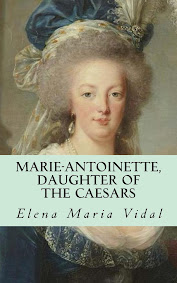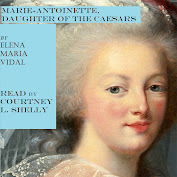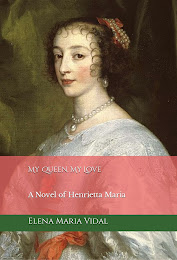
Today is the feast of St Ursula and Companions. St. Ursula has always intrigued me, and was one of the most popular saints in the Middle Ages, although she was since been banished from the Roman calendar. There were most likely only 11 virgins, not 11,000, which is part of the problem. Nevertheless, it is a wonderful story. From Early British Kingdoms:
Although there are no ancient dedications to her in Britain, Ursula is said to have been a British princess. According to legend, after her father, 'King' Donaut, agreed to her marriage with Governor Conan Meriadoc of Armorica (Brittany), she set sail to join him along with 11,000 virginal handmaidens. However, a miraculous storm brought them over the sea in a single day to a Gaulish port, where Ursula declared that, before her marriage, she would undertake a pan-European pilgrimage. Together, the British maidens headed for Rome where Ursula persuaded Pope Cyriacus and Sulpicius, Bishop of Ravenna to join her happy band of followers. She was later welcomed Pantulus, Bishop of Basle & Jaques, Bishop of Liege, and 'King' Ethereus arrived from Britain with Prince Conan. The two were apparently married immediately and Ursula must have become pregnant soon afterwards for legend attributes a son to them. Eventually, the party set out for Cologne which was being besieged by Huns. In a dreadful massacre, the Huns beheaded all the virgins and, with bow & arrow, their leader shot St. Ursula dead. She and her virgin followers were buried in Cologne where the cathedral is dedicated to her. Conan, her husband, apparently survived. (Read more.)Share

















8 comments:
Yes, that is a fascinating if not convoluted story. Do you know if the sight of the Cathedral in Cologne has ever been excavated?
I don't know.
I did not know that she was removed from the Roman calendar! How sad! Especially considering that the oldest girls school in the US, as well as the oldest Catholic school in the US is the Ursuline Academy in New Orleans(which was opened and run by, originally, the Ursuline nuns). It's as if they have lost their patroness.
She is not on the Novus Ordo calendar but for those of us who keep track of the old calendar, we can always remember her on this day. Her sainthood is not abolished; she is just omitted from the new missal and breviary (sort of like the way head-coverings were omitted from the new Code of Canon Law.)
Elena - You mentioned that you follow the old calendar; do you follow it exclusively or do you simultaneously follow the Novus Ordo calendar?
What do you do for daily readings? Do you follow a TLM daily missal? Or do you follow the Novus Ordo calendar and lectionary for weekdays? Or both?
I am curious because as I learn more about the extraordinary form of the Mass and our old calendar, it seems so rich and full of wonderful traditions and practices - i.e.- observing Ember days, fasting rules, etc. It makes me sad that the Church calendar was so tinkered with. Why did they have to go and eliminate so many traditions and saint's days? Do you know anything about why the decisions were made this way?
It seems that if both the old and new calendars were followed it could get complicated or confusing to live out as a Catholic family - i.e. - conflicting memorials of saints, fasting when other Catholics are not, etc. Do you have any insights into this?
It is sad to think that the Church is 'divided' (in a way) in its following the readings - Novus Ordo readings for many, TLM 'old calendar' readings for a relative few. One thing that I think is really amazing about the Catholic Church is that (for the most part) the readings are the same all over every day - a unifying experience. That is why I think it is silly that they got rid of Latin, but I digress.
Sorry for the bombardment of questions - I obviously don't know much about this topic and I would love to hear your thoughts and impressions.
Margaret, I follow the calendar the Pope uses (and my parish church), which is the Novus Ordo. I use the revised breviary and missal. However, since two of my favorite books, "Divine Intimacy" (Fr Gabriel) and "The Liturgical Year" (Dom Gueranger)follow the old calendar, I usually have an idea of it on any given day. A lot was changed and yet when I read Dom Gueranger, I see the spirit of the liturgy is basically the same.
Those sound like great books - I'll have to see if I can find them. I am always looking for good materials to learn more about our faith. Yes, the spirit and intent of both forms of the Mass are the same from what I understand. Implementation and 'creative interpretation' is another matter! :)
Ah, tis a pity that the world (which unfortunately includes the Vatican) is so caught up in pedantic literalism these days.
But, all is not lost, some keep flame alive: I have an Anglo-Catholic Calendar with the Feast of St. Ursula duly noted!
Post a Comment